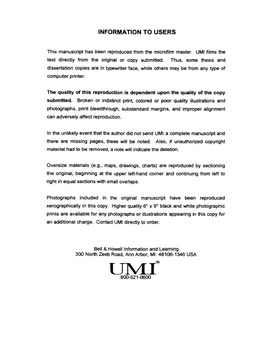| dc.contributor.advisor | Klebba, Phillip E., | en_US |
| dc.contributor.author | Cao, Zhenghua. | en_US |
| dc.date.accessioned | 2013-08-16T12:30:45Z | |
| dc.date.available | 2013-08-16T12:30:45Z | |
| dc.date.issued | 1999 | en_US |
| dc.identifier.uri | https://hdl.handle.net/11244/5887 | |
| dc.description.abstract | The site-directed alanine substitution studies revealed that three aromatic residues in the central region of FepA, Y260, Y272, and F329, are involved in the binding and transport of ferric enterobactin. A significant decrease was observed for Y260A, while only slight or no changes were found in Y272A and F329A. In any of the double mutant combinations, however, dramatic decreases were detected. To demonstrate that the decreased functionality in the double combinations did not result from the conformational change due to the removal of aromatic stacking interactions, the single aromatic substitution mutants were combined with R316A, a positively charged mutant found to be essential in previous studies. The double mutations thus proved that any combination of two independent essential residues resulted in a dramatic decrease in receptor functionality. Furthermore, the binding and transport analysis revealed that Y260 and Y272 are important in ligand binding, while R316 and F329 contribute to both ferric enterobactin binding and transport. The crystal structure of FepA showed that Y272 and F329 were located at the surface of FepA, while Y260 and R316 were found at the hinge of the surface loops and the beta-barrel domain. Fluorescent studies indicated that Y272 and F329 are involved in the initial binding, on the other hand, Y260 and R316 are responsible for the subsequent absorption. | en_US |
| dc.description.abstract | In gram-negative bacteria, the uptake of ferric enterobactin is achieved by a ferric siderophore transport system. Enterobactin, one of the native siderophores synthesized in Escherichia coli, functions as an iron carrier, by forming ferric enterobactin, to supply iron through the ferric enterobactin transport system. FepA is the outer membrane receptor protein for ferric enterobactin. The chemical features of ferric enterobactin indicate that the aromatic and positively charged residues in its receptor might be important in ferric enterobactin absorption. | en_US |
| dc.format.extent | xii, 152 leaves : | en_US |
| dc.subject | Chemistry, Biochemistry. | en_US |
| dc.subject | Ligand binding (Biochemistry) g | en_US |
| dc.subject | Biology, Molecular. | en_US |
| dc.subject | Escherichia coli Genetic aspects. | en_US |
| dc.title | Ferric enterobactin transport through FepA in Escherichia coli: From hydrophobic stacking to charge interactions. | en_US |
| dc.type | Thesis | en_US |
| dc.thesis.degree | Ph.D. | en_US |
| dc.thesis.degreeDiscipline | Department of Chemistry and Biochemistry | en_US |
| dc.note | Adviser: Phillip E. Klebba. | en_US |
| dc.note | Source: Dissertation Abstracts International, Volume: 60-11, Section: B, page: 5493. | en_US |
| ou.identifier | (UMI)AAI9949713 | en_US |
| ou.group | College of Arts and Sciences::Department of Chemistry and Biochemistry | |
